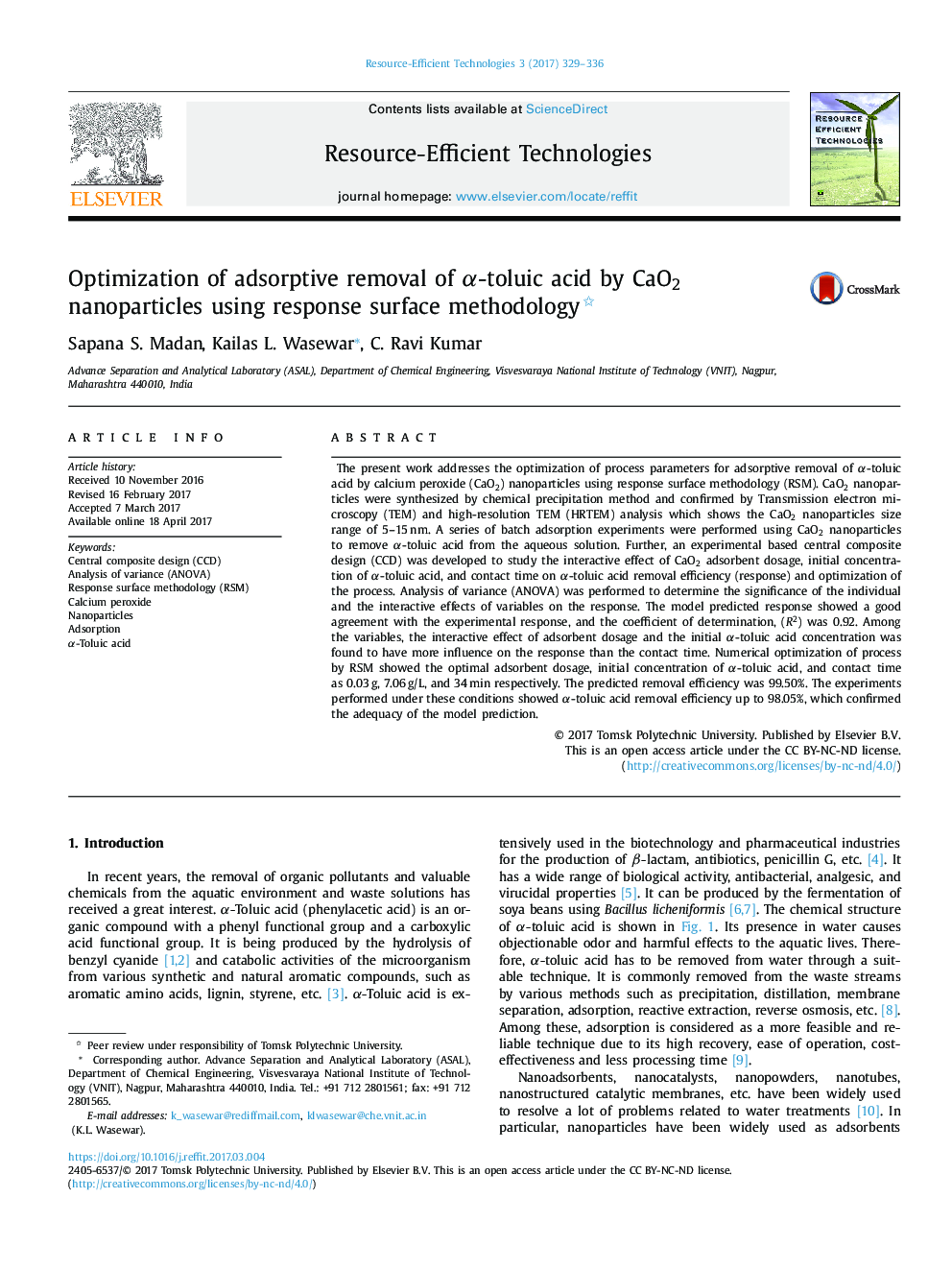| Article ID | Journal | Published Year | Pages | File Type |
|---|---|---|---|---|
| 5749718 | Resource-Efficient Technologies | 2017 | 8 Pages |
The present work addresses the optimization of process parameters for adsorptive removal of α-toluic acid by calcium peroxide (CaO2) nanoparticles using response surface methodology (RSM). CaO2 nanoparticles were synthesized by chemical precipitation method and confirmed by Transmission electron microscopy (TEM) and high-resolution TEM (HRTEM) analysis which shows the CaO2 nanoparticles size range of 5-15ânm. A series of batch adsorption experiments were performed using CaO2 nanoparticles to remove α-toluic acid from the aqueous solution. Further, an experimental based central composite design (CCD) was developed to study the interactive effect of CaO2 adsorbent dosage, initial concentration of α-toluic acid, and contact time on α-toluic acid removal efficiency (response) and optimization of the process. Analysis of variance (ANOVA) was performed to determine the significance of the individual and the interactive effects of variables on the response. The model predicted response showed a good agreement with the experimental response, and the coefficient of determination, (R2) was 0.92. Among the variables, the interactive effect of adsorbent dosage and the initial α-toluic acid concentration was found to have more influence on the response than the contact time. Numerical optimization of process by RSM showed the optimal adsorbent dosage, initial concentration of α-toluic acid, and contact time as 0.03âg, 7.06âg/L, and 34âmin respectively. The predicted removal efficiency was 99.50%. The experiments performed under these conditions showed α-toluic acid removal efficiency up to 98.05%, which confirmed the adequacy of the model prediction.
Graphical Abstract Download high-res image (94KB)Download full-size image
